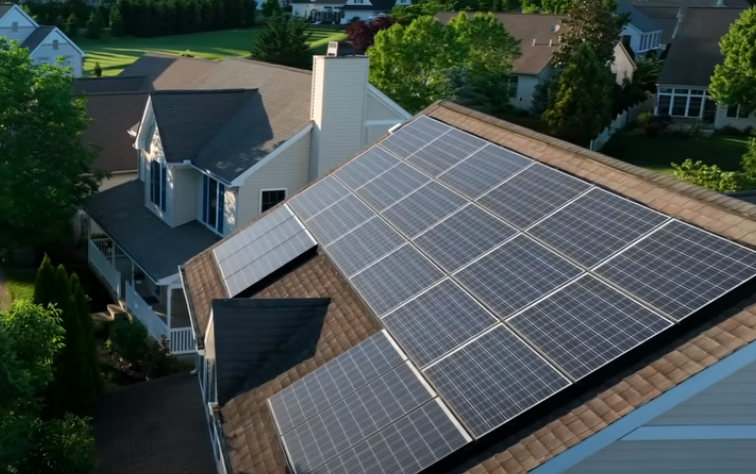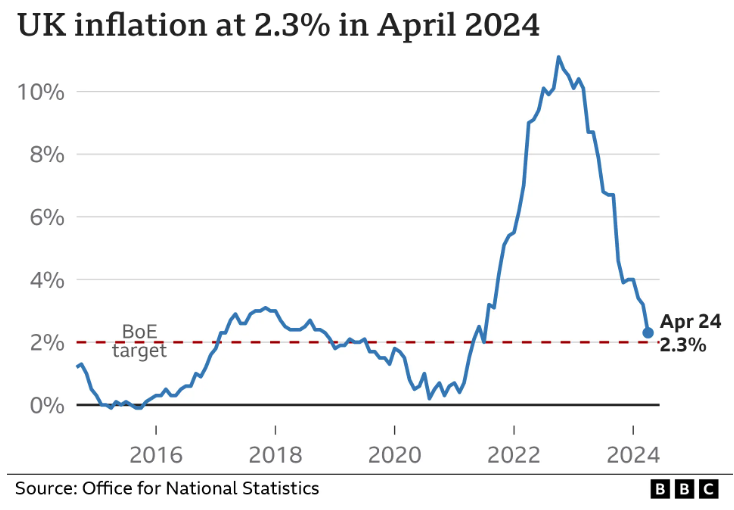
The number of solar panels needed to run a house in the UK can be estimated using a similar method as described previously, but with adjustments for the UK’s specific conditions, such as average household energy consumption and peak sunlight hours.
Step-by-Step Calculation:
-
Step 1: Determine the Household’s Energy Consumption
To determine how many solar panels you need, you first need to understand your household’s energy consumption. This is typically measured in kilowatt-hours (kWh). Here’s how you can determine this:
- Gather Electricity Bills:
- Collect your electricity bills for the past year. This will give you a comprehensive view of your energy consumption throughout different seasons.
- Calculate Monthly Average Consumption:
- Look at the total kWh used each month as stated on your electricity bills.
- If you have 12 months of data, sum the total kWh for the year and then divide by 12 to get the monthly average.
Example Calculation:
- Suppose your monthly kWh usage from your bills looks like this:
- January: 400 kWh
- February: 350 kWh
- March: 300 kWh
- April: 250 kWh
- May: 200 kWh
- June: 150 kWh
- July: 150 kWh
- August: 150 kWh
- September: 200 kWh
- October: 300 kWh
- November: 350 kWh
- December: 400 kWh
- Total annual consumption: 400+350+300+250+200+150+150+150+200+300+350+400=3200 kWh400 + 350 + 300 + 250 + 200 + 150 + 150 + 150 + 200 + 300 + 350 + 400 = 3200 \text{ kWh}400+350+300+250+200+150+150+150+200+300+350+400=3200 kWh
- Monthly average consumption: 3200 kWh/year÷12 months=266.67 kWh/month3200 \text{ kWh/year} \div 12 \text{ months} = 266.67 \text{ kWh/month}3200 kWh/year÷12 months=266.67 kWh/month
- Adjust for Future Changes (Optional):
- Consider any anticipated changes in your energy use. For instance, if you plan to buy an electric vehicle or add air conditioning, your consumption may increase.
By accurately determining your average monthly energy consumption, you can proceed to calculate how many solar panels you need to generate that amount of electricity. For this example, let’s assume the average monthly energy consumption is approximately 266.67 kWh.
Understanding your energy consumption is crucial because it sets the foundation for the rest of the calculation. Without knowing how much energy you use, you cannot accurately determine the size of the solar panel system needed to meet your needs.
Step 2: Calculate Daily Energy Consumption
Once you have determined your average monthly energy consumption, the next step is to calculate your daily energy consumption. This will help you understand how much energy you need to generate each day to meet your household’s needs.
How to Calculate Daily Energy Consumption:
- Use the Monthly Average:
- Take the average monthly energy consumption you calculated in Step 1.
- Convert Monthly Consumption to Daily Consumption:
- There are 30 days in a month (for calculation purposes, as it’s a common average).
- Divide the average monthly energy consumption by 30 to get the daily energy consumption.
Example Calculation:
Let’s use the average monthly energy consumption from the previous example, which is approximately 266.67 kWh per month.
- Monthly Consumption: 266.67 kWh
- Calculate Daily Consumption:
Daily Energy Consumption=Monthly Energy Consumption30 days\text{Daily Energy Consumption} = \frac{\text{Monthly Energy Consumption}}{30 \text{ days}}Daily Energy Consumption=30 daysMonthly Energy Consumption
Daily Energy Consumption=266.67 kWh30 days≈8.89 kWh/day\text{Daily Energy Consumption} = \frac{266.67 \text{ kWh}}{30 \text{ days}} \approx 8.89 \text{ kWh/day}Daily Energy Consumption=30 days266.67 kWh≈8.89 kWh/day
So, the average daily energy consumption for the household is approximately 8.89 kWh.
Importance of Calculating Daily Energy Consumption:
- Sizing the Solar System: Knowing your daily energy consumption helps in determining how many solar panels you need to install to generate enough energy each day to meet your household’s needs.
- Accounting for Variations: It helps in understanding and planning for daily energy production, considering that solar energy production can vary from day to day based on weather conditions.
- Energy Management: Helps in making decisions about energy storage solutions, such as batteries, to store excess energy produced on sunny days for use on cloudy days or at night.
With the daily energy consumption figure, you can now move on to the next steps to determine the number of solar panels required based on their efficiency and the amount of sunlight your location receives.
Step 3: Estimate Peak Sunlight Hours
Peak sunlight hours are crucial in determining how much energy your solar panels can generate. Peak sunlight hours represent the equivalent number of hours per day when solar irradiance averages 1,000 watts per square meter, which is the standard condition under which solar panels are rated.
How to Estimate Peak Sunlight Hours:
- Understand Peak Sunlight Hours:
- Peak sunlight hours are not just daylight hours. They account for the intensity of sunlight, averaging out the solar energy received over the day.
- For instance, if the sun shines at 1,000 watts per square meter for 3 hours, then these 3 hours are considered as 3 peak sunlight hours.
- Find Data for Your Location:
- Peak sunlight hours vary by geographic location. In the UK, the average number of peak sunlight hours is generally lower compared to sunnier regions.
- You can find this information from local solar energy resources or use online solar irradiance maps and calculators.
- Example: The UK typically receives about 3-4 peak sunlight hours per day.
- Use Average Peak Sunlight Hours for Calculation:
- For a more conservative estimate, use the lower end of the range to ensure your solar system meets your energy needs even on less sunny days.
- Example: Assume 3.5 peak sunlight hours per day for the UK.
Importance of Peak Sunlight Hours:
- Accurate Sizing: Knowing the peak sunlight hours helps in accurately sizing your solar panel system to ensure it can generate sufficient energy.
- Energy Production Estimation: It allows you to estimate the potential energy production of each solar panel based on the local sunlight conditions.
- Efficiency Planning: Helps in planning for energy efficiency and understanding how many panels are required to meet your daily energy consumption needs.
Example Calculation:
Let’s assume you’ve determined that your location in the UK averages 3.5 peak sunlight hours per day.
- Average Peak Sunlight Hours: 3.5 hours per day
With this information, you can now move on to calculating the daily output per solar panel based on these peak sunlight hours, which will further help in determining the total number of panels needed.
Step 4: Determine the Solar Panel Output
In this step, you need to determine how much electricity each solar panel can produce based on its wattage and the peak sunlight hours for your location. This will help you estimate the total number of panels needed to meet your daily energy consumption.
How to Determine Solar Panel Output:
- Understand Solar Panel Wattage:
- Solar panels are rated by their wattage, which indicates the amount of power they can produce under standard test conditions (usually measured in watts).
- Common residential solar panels range from 250 to 400 watts. For this calculation, we’ll use a 350-watt panel as an example.
- Calculate Daily Output per Panel:
- Multiply the panel’s wattage by the average peak sunlight hours per day.
- This gives you the daily energy output of one panel in kilowatt-hours (kWh).
Example Calculation:
- Panel Wattage: Assume you are using 350-watt panels.
- Peak Sunlight Hours: Assume the UK location receives an average of 3.5 peak sunlight hours per day.
The formula to calculate the daily output per panel is:
Daily Output per Panel (kWh)=Panel Wattage (W)×Peak Sunlight Hours (h)÷1000\text{Daily Output per Panel (kWh)} = \text{Panel Wattage (W)} \times \text{Peak Sunlight Hours (h)} \div 1000Daily Output per Panel (kWh)=Panel Wattage (W)×Peak Sunlight Hours (h)÷1000
Applying the numbers:
Daily Output per Panel=350 W×3.5 h÷1000\text{Daily Output per Panel} = 350 \text{ W} \times 3.5 \text{ h} \div 1000Daily Output per Panel=350 W×3.5 h÷1000
Daily Output per Panel=1225 Wh÷1000=1.225 kWh/day\text{Daily Output per Panel} = 1225 \text{ Wh} \div 1000 = 1.225 \text{ kWh/day}Daily Output per Panel=1225 Wh÷1000=1.225 kWh/day
So, each 350-watt solar panel can produce approximately 1.225 kWh of electricity per day under average UK sunlight conditions.
Importance of Determining Solar Panel Output:
- System Sizing: Helps you understand how much energy a single panel can generate, which is crucial for sizing your solar panel system.
- Energy Production Estimation: Provides a clear picture of how many panels you need to install to meet your daily energy requirements.
- Cost Efficiency: Assists in calculating the return on investment by understanding how much electricity your system will produce over its lifetime.
With the daily output per panel calculated, you can now proceed to the final step, which involves determining the total number of panels needed to meet your household’s daily energy consumption.
Step 5: Calculate the Number of Panels Needed
Now that you know your daily energy consumption and the daily output per solar panel, you can calculate the total number of solar panels needed to meet your household’s energy requirements.
How to Calculate the Number of Panels Needed:
- Determine Daily Energy Consumption:
- From Step 2, you have your average daily energy consumption. For this example, let’s use 8.89 kWh/day.
- Determine Daily Output per Panel:
- From Step 4, you have the daily output per panel. For this example, we calculated that a 350-watt panel produces approximately 1.225 kWh/day.
- Calculate the Number of Panels Needed:
- Divide the daily energy consumption by the daily output per panel.
- This gives you the total number of panels required to generate enough energy to meet your daily needs.
Example Calculation:
- Daily Energy Consumption: 8.89 kWh/day
- Daily Output per Panel: 1.225 kWh/day
The formula to calculate the number of panels needed is:
Number of Panels=Daily Energy Consumption (kWh)Daily Output per Panel (kWh)\text{Number of Panels} = \frac{\text{Daily Energy Consumption (kWh)}}{\text{Daily Output per Panel (kWh)}}Number of Panels=Daily Output per Panel (kWh)Daily Energy Consumption (kWh)
Applying the numbers:
Number of Panels=8.89 kWh/day1.225 kWh/day per panel≈7.26\text{Number of Panels} = \frac{8.89 \text{ kWh/day}}{1.225 \text{ kWh/day per panel}} \approx 7.26Number of Panels=1.225 kWh/day per panel8.89 kWh/day≈7.26
Since you can’t install a fraction of a panel, you would round up to the nearest whole number. Thus, you would need 8 solar panels to meet your daily energy consumption of 8.89 kWh.
Summary of Steps:
- Determine Household Energy Consumption: Calculate your average daily energy use (e.g., 8.89 kWh/day).
- Estimate Peak Sunlight Hours: Find the average peak sunlight hours for your location (e.g., 3.5 hours/day in the UK).
- Determine Solar Panel Output: Calculate the daily output per panel (e.g., 1.225 kWh/day for a 350-watt panel).
- Calculate the Number of Panels Needed: Divide daily energy consumption by daily panel output (e.g., 8.89 kWh/day ÷ 1.225 kWh/day per panel ≈ 7.26, rounded up to 8 panels).
Importance of This Calculation:
- Ensures Adequate Energy Supply: Ensures that the installed solar panels will generate enough electricity to meet your household’s needs.
- Cost Estimation: Helps in estimating the initial investment required for purchasing and installing the solar panels.
- Planning and Installation: Assists in planning the space needed for installation and understanding the potential energy output and savings.
By following these steps, you can accurately estimate the number of solar panels needed to power your house based on your specific energy consumption and local sunlight conditions.
Step 6: Other Considerations and Final Adjustments
After calculating the initial number of solar panels needed, it’s essential to consider additional factors that might influence the final number of panels and the overall effectiveness of your solar power system.
Additional Considerations:
- System Efficiency and Losses:
- Inverter Efficiency: Solar panels generate direct current (DC) electricity, which needs to be converted to alternating current (AC) for home use. Inverters typically have an efficiency of around 90-95%.
- System Losses: Consider potential energy losses due to shading, dust, wiring resistance, and other factors. These can account for about 10-20% of total energy production.
- Panel Orientation and Tilt:
- Optimal Angle: Panels should be tilted at an angle equal to the latitude of your location for optimal energy production.
- Orientation: Panels should face south in the Northern Hemisphere to capture the maximum amount of sunlight throughout the day.
- Energy Storage Needs:
- Batteries: If you plan to store excess energy for use during cloudy days or at night, consider the capacity and number of batteries required. This may affect the overall system size and cost.
- Future Energy Needs:
- Growth: Anticipate any increase in energy consumption, such as purchasing an electric vehicle or adding new appliances. It’s wise to slightly oversize the system to accommodate future growth.
- Local Regulations and Incentives:
- Permits: Check local regulations regarding solar installations. Permits may be required.
- Incentives: Investigate government incentives, rebates, and feed-in tariffs that can offset installation costs and improve return on investment.
- System Monitoring and Maintenance:
- Monitoring: Install a system to monitor energy production and consumption to ensure optimal performance.
- Maintenance: Regularly clean and maintain panels to prevent efficiency losses due to dirt and debris.
Adjusting the Number of Panels:
- Calculate Adjusted Daily Output:
- Adjust the initial daily output per panel to account for system losses. If we assume a 15% loss:
Adjusted Daily Output per Panel=1.225 kWh/day×(1−0.15)=1.041 kWh/day\text{Adjusted Daily Output per Panel} = 1.225 \text{ kWh/day} \times (1 – 0.15) = 1.041 \text{ kWh/day}Adjusted Daily Output per Panel=1.225 kWh/day×(1−0.15)=1.041 kWh/day
- Recalculate the Number of Panels Needed:
- Divide the daily energy consumption by the adjusted daily output per panel.
Number of Panels=8.89 kWh/day1.041 kWh/day per panel≈8.54\text{Number of Panels} = \frac{8.89 \text{ kWh/day}}{1.041 \text{ kWh/day per panel}} \approx 8.54Number of Panels=1.041 kWh/day per panel8.89 kWh/day≈8.54
- Round up to the nearest whole number, so you would need 9 panels.
Final Steps:
- Consult a Professional:
- Consult with a professional solar installer to confirm your calculations and get a detailed site assessment.
- Installation and Setup:
- Plan the installation layout, considering roof space, shading, and structural integrity.
- Monitor and Optimize:
- Once installed, monitor the system’s performance and make any necessary adjustments to maximize efficiency.
Conclusion:
By considering system efficiency, future energy needs, local regulations, and potential energy storage, you ensure that your solar power system is well-designed to meet your household’s energy demands. Adjusting the initial panel count based on these factors leads to a more accurate and reliable solar power system.
Other Considerations:
- Energy Efficiency Improvements: Improving the energy efficiency of the home can reduce the number of panels needed.
- Panel Efficiency and Quality: Higher efficiency panels can produce more power in the same amount of space.
- Location and Weather: Actual sunlight exposure and local weather patterns can affect the performance of solar panels.
- Storage Needs: If you plan to store energy with batteries, this will influence the system size and cost.
It’s advisable to consult with a professional solar installer to get a precise assessment tailored to your specific situation.
Like this:
Like Loading...









